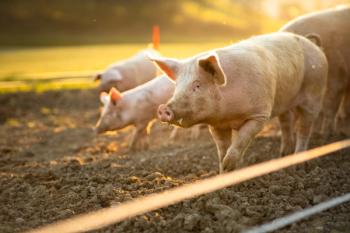Key Points
- Researchers developed a smartphone-based test for detecting antibiotics and pesticides in food within 10 seconds.
- The method uses fluorescent uranium-based probes and dual-step ratiometric sensing.
- Three heterometallic uranium-organic frameworks (UOFs) were synthesized and tailored for specific analytes.
- Spectroscopy-based analysis enabled highly selective and sensitive detection across a range of food samples.
Innovative Fluorescent Sensor Offers Rapid Food Safety Detection
In an advance for food safety testing, scientists from Southeast University, Shenyang University of Chemical Technology, and Zhejiang University of Technology have unveiled a highly sensitive and smartphone-compatible method for detecting hazardous pesticides and antibiotics in food. Published in Food Chemistry, the study showcases a new two-step dynamic ratiometric sensing test (DRST) using heterometallic uranium-organic frameworks (UOFs), offering a detection time as fast as 10 seconds (1).
The research team—Kaiyang Yang, Yaqian Jiang, Hongyuan Wu, Xiaoyu Jin, Hao Yang, Jun Zhou, and Wenhua Xu—developed the novel sensing platform to tackle the urgent need for fast and selective screening methods in the face of widespread chemical contamination in global food supplies (1).
Spectroscopic Fluorescence Enhances Detection Precision
At the heart of this breakthrough lies the use of photoluminescent spectroscopy. The scientists synthesized three heterometallic uranium-based coordination polymers—each with distinct structural and luminescent properties—that function as sensitive and selective fluorescent probes. These uranium-organic frameworks (UOFs) were specifically engineered to respond to the presence of various pesticides and antibiotics through unique fluorescence responses (1).
The key analytical technique was a reaction-time-oriented dual-step ratiometric fluorescence sensing strategy. This method uses the change in fluorescence intensity at two emission wavelengths, offering a self-calibrated signal that minimizes environmental noise and enhances precision. The initial emission response occurs within seconds of exposure to the target analyte, enabling ultra-fast preliminary screening (1).
“The incorporation of uranium centers and the heterometallic design resulted in enhanced rigidity, more defined pore structures, and strong luminescence,” the researchers explained in the paper. These properties collectively allowed the sensors to rapidly distinguish between structurally similar antibiotic and pesticide molecules based on their unique interaction times and emission shifts (1).
Smartphone Integration for Field-Ready Testing
A particularly practical feature of the new system is its compatibility with standard smartphones. Using a simple attachment and app interface, users can record and interpret the fluorescence changes in real time, making the test deployable in food markets, agricultural sites, or inspection labs without bulky instrumentation. Smartphone technology is being considered for many sensor applications (1,2)
The team validated their system across a variety of food samples, including vegetables and animal products, showing reliable and reproducible results. Detection limits for several target compounds were well below regulatory thresholds, confirming the platform’s potential as a cost-effective screening tool in routine food safety evaluations (1).
Real-World Impact and Future Directions
The technique’s dual-step approach was especially effective in reducing false positives and improving selectivity—two major challenges in trace contaminant analysis. Notably, this method allows for different contaminants to be identified not just by their emission wavelengths, but also by the time-dependent response patterns, adding another layer of analytical discrimination (1).
Given its combination of speed, sensitivity, portability, and user-friendliness, this research paves the way for more accessible and immediate food contaminant detection tools. The team plans to expand the system’s capabilities to include other environmental pollutants and pharmaceutical residues, potentially broadening its scope in environmental and health monitoring (1).
References
(1) Yang, K.; Jiang, Y.; Wu, H.; Jin, X.; Yang, H.; Zhou, J.; Xu, W. Reaction Time Oriented a Two-Step DRST with Three Heterometallic UOFs: Rapid and Selective Detection of Antibiotics and Pesticides in Food Samples by Using a Smartphone-Integrated Fluorescent Probe. Food Chem. 2025, 437, 144843. DOI: 10.1016/j.foodchem.2025.144843
(2) Rateni, G.; Dario, P.; Cavallo, F. Smartphone-Based Food Diagnostic Technologies: A Review. Sensors 2017, 17 (6), 1453. DOI: 10.3390/s17061453





